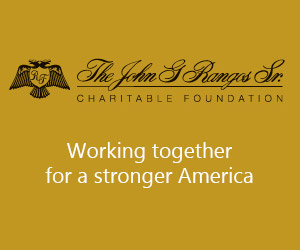Can Tug-of-War Lead to Unity? The Future of the Orthodox Church in Ukraine
by Ines Angeli Murzaku*
The death of Patriarch Alexei II marked the end of the “cold era” contacts between Moscow and Constantinople and started a new epoch in inter-Orthodox relations. Kirill’s first foreign visit since his January 2009 election as Patriarch of Moscow was to Constantinople and the Ecumenical Patriarch Bartholomew. Unity and ecumenism were priorities for Patriarch Kirill, and the 2009 visit and his address prove it. He even attempted to put pressure on the Turkish government to reopen the Orthodox Theological School of Halki. But this was then. Now, the relations between Moscow and Constantinople have drastically changed over Ukraine.

Ecumenical Patriarch Bartholomew with Patriarch Kirill of Moscow
In preparation for the independence celebrations, on April 10, 2018, the Ukrainian President Petro Porošenko made a request to the Ecumenical Patriarch of Constantinople Bartholomew to create a new Ukrainian Orthodox Church and grant autocephaly to end the abnormity of three Orthodox jurisdictions in Ukraine. There are three Orthodox jurisdictions in Ukraine: 1) the Ukrainian Orthodox Church of the Moscow Patriarchate (under the jurisdiction of the Russian Orthodox Church), 2) the Ukrainian Orthodox Church of the Kiev Patriarchate (established in 1992, headed by Filaret Denisenko) and 3) the Ukrainian autocephalous Orthodox Church (with the smallest number of faithful and parishes). Out of the three Orthodox jurisdictions, only the first is considered canonical, while the remaining two jurisdictions are considered “schismatic” and unrecognized by the Orthodox sister churches.
The president’s decision to seek autocephaly from the Mother Church of Constantinople was supported by the majority of the Verkhovna Rada, the unicameral parliament of Ukraine. So, the request for autocephaly from Constantinople is not only a religious, ecclesiastical matter but a geopolitical urgency, which, if granted, will politically consolidate and unite Ukraine. The president’s request for autocephaly found support from the Ecumenical Patriarch of Constantinople and fierce resistance from Patriarch Kirill of Moscow. Responding to the president’s request, the Ecumenical Patriarch appointed two exarchs, Archbishop Daniel of Pamphilon and Bishop Ilarion of Edmonton in Kyiv in preparation “for the granting of autocephaly to the Orthodox Church in Ukraine.” Patriarch Kirill of Moscow reacted to the new appointments, indicating the Ukrainian Orthodox Church is under the Patriarchate of Moscow’s territorial jurisdiction, and new and changed political boundaries and independence after the fall of the Soviet bloc do not apply to the territorial jurisdiction of the Moscow Patriarchate.
Why is the Mother Church intervening in Ukraine?
Autocephaly is expected from the Mother Church of Constantinople as the “First Among Equals” among other autocephalous Orthodox Churches. But there are other requirements needed for granting autocephaly besides the primacy of the Mother Church of Constantinople: “The final and definitive decision concerning autocephaly belong [sic] to a Synod representing more generally the entirety of the local Autocephalous Orthodox Churches, and especially to an Ecumenical Synod. Such decisions cannot be made by each local Autocephalous Church or by a local Synod of a Church from which a Diocese is requesting autocephaly. Such a local Synod has the right only to receive the first petitions for autocephaly and to form an opinion as to whether or not the reasons proffered for autocephaly are justified in accordance with the spirit of the 34th Apostolic Canon,” Ecumenical Patriarch Athenagoras wrote in his letter to Metropolitan Pimen, on June 24, 1970.
Moreover, the Golden Seal Certificate of Ecumenical Patriarch Jeremiah II in the year 1591, which authorized the establishment of the Moscow Patriarchate, defined the canonical territory of the Russian Orthodox Church. The certificate indicates that the Patriarch of Moscow “be counted among the other Patriarchs and his order in the Patriarchal ranks and the commemoration of his name in the services come after that of the Patriarch of Jerusalem; and that he be obliged to commemorate the name of the Ecumenical Patriarch, as well as the names of the other Patriarchs, but always considering as his Head and First in rank, as do the other Patriarchs, the Apostolic Throne of Constantinople.”
However, according to the media reports, Patriarch Kirill of Moscow seems more interested in exploring documents written after 1591. His Holiness desires “to hold a meeting of scholars and hierarchs at which it would be possible to discuss the historical documents concerning the question of the Kiev Metropolis’ inclusion into the Moscow Patriarchate in 1686.” The truth is that due to historical and ecclesial circumstances, the Kievan Metropolis was divided into three parts distributed among Russia, Poland and Turkey. Encountering enormous difficulties in choosing a single metropolitan for the territorially divided metropolis, in 1686, the Ecumenical Patriarch of Constantinople decided to transfer part of the Kievan Metropolis to the Moscow Patriarchate temporarily. This was never considered a permanent jurisdictional re-assignment by the Mother Church of Constantinople of the Metropolis of Kiev under the authority of the Moscow Patriarch. If this was a permanent re-assignment, it would be anti-canonical, since in the letter of establishment of the Moscow Patriarchate in 1591 the limits of canonical jurisdiction of the Moscow Patriarchate were sanctioned and these limits did not in any way include the Kievan Metropolis, which included, under the omophorion of the Ecumenical Patriarchate, Ukraine, Belarus, Lithuania and Poland. Moreover, for the ecclesial jurisdiction to be reassigned or revised, a synod of bishops needed to be convened and eventually approve the new ecclesial jurisdiction of the Moscow Patriarchate.
Any solutions to Moscow-Constantinople Tug-of-War over Ukraine?
Two possible outcomes are on the horizon and can be a reality if priorities are shifted. The first is a tomos of autocephaly from the Mother Church of Constantinople for the Ukrainian Orthodox Church and the elevation of Filaret Denisenko as Patriarch. The second is the establishment of a united Orthodox Church of Ukraine under the jurisdiction of the Ecumenical Patriarch of Constantinople. Can tug-of-war Lead to Unity? Yes, if unity returns and becomes a priority. Dis-unity and competition would be devastating on an already aching Body of Christ in the East and in the West.
Ines Angeli Murzaku is Professor of Ecclesiastical History and Founding Chair of Catholic Studies at Seton Hall University.
This article first appeared in publicorthodoxy.org











0 comments